25+ SAMPLE Construction Project Agreement
-
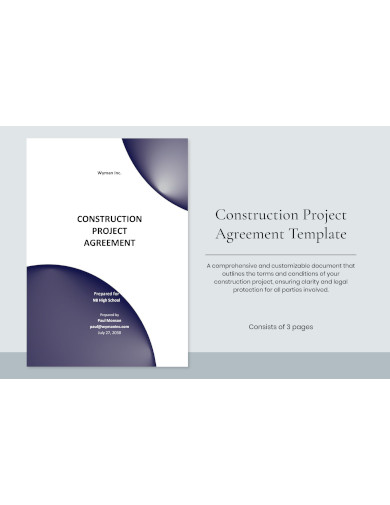
Construction Project Agreement
download now -

Construction Project Contract
download now -

Construction Investment Project Agreement
download now -

Construction Project Consultant Agreement
download now -
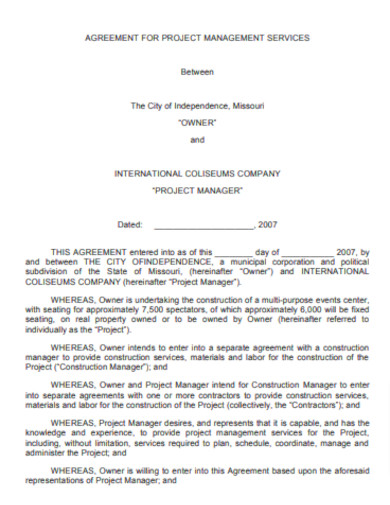
Construction Project Management Agreement
download now -
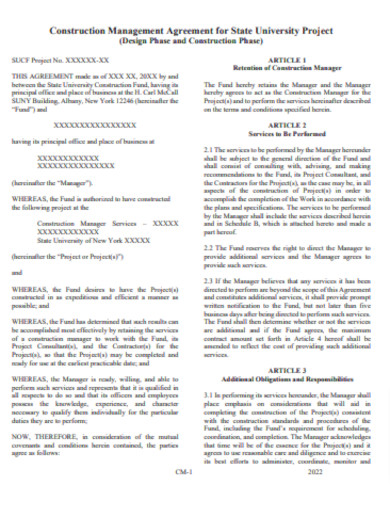
Construction Management Agreement for Project
download now -
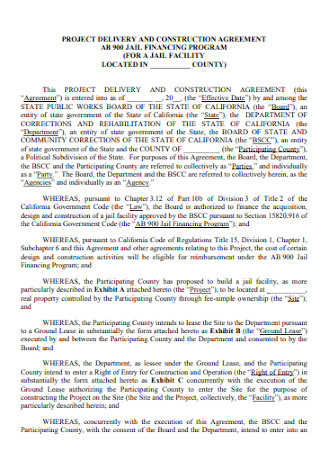
Project Delivery and Construction Agreement
download now -
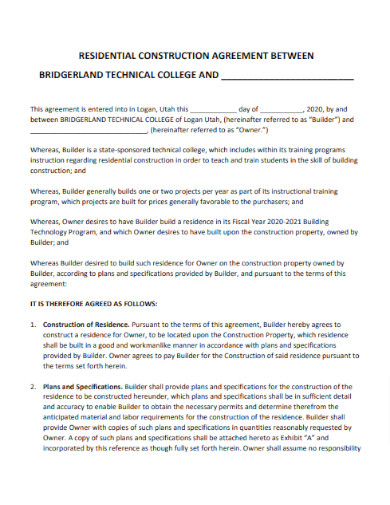
Construction Residential Project Agreement
download now -

Construction Philippines Project Agreement
download now -
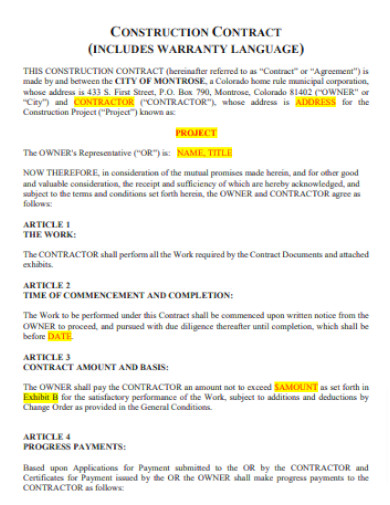
Construction Project General Contractor Agreement
download now -
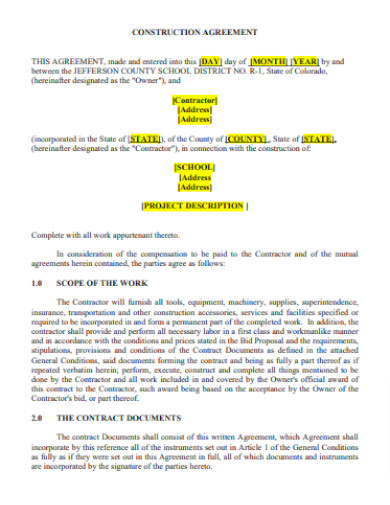
Simple Construction Project Agreement
download now -
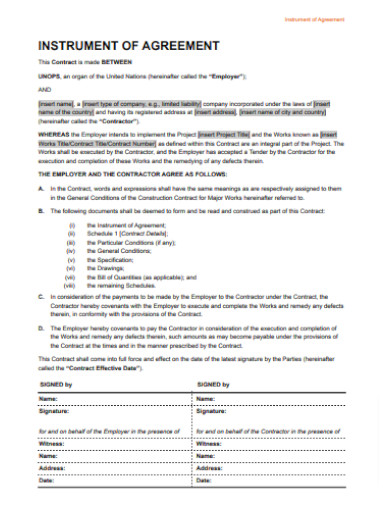
Construction Project Employee Agreement
download now -
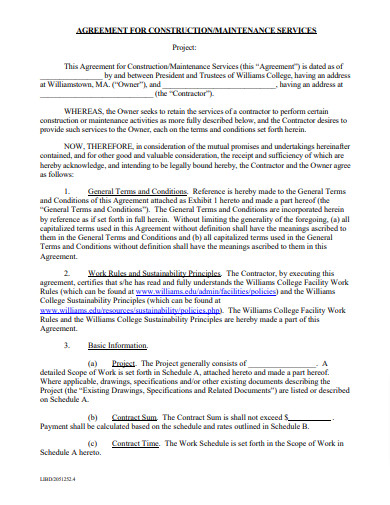
Construction Project Maintenance Services Agreement
download now -
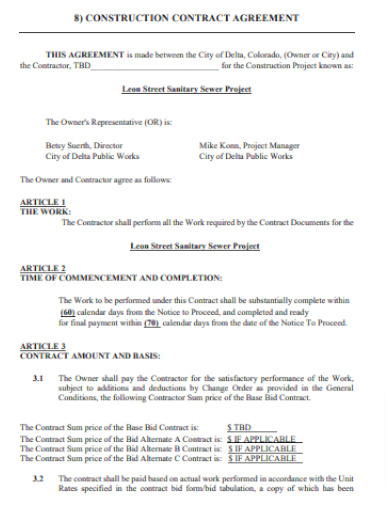
Sample Construction Project Agreement
download now -

Construction Replacement Project Agreement
download now -
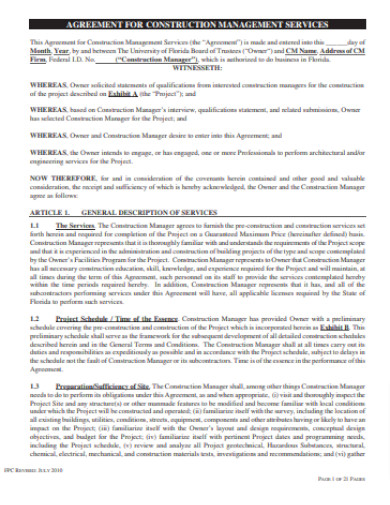
Construction Management Service Project Agreement
download now -

Basic Construction Project Agreement
download now -

Construction Subcontractor Project Agreement
download now -
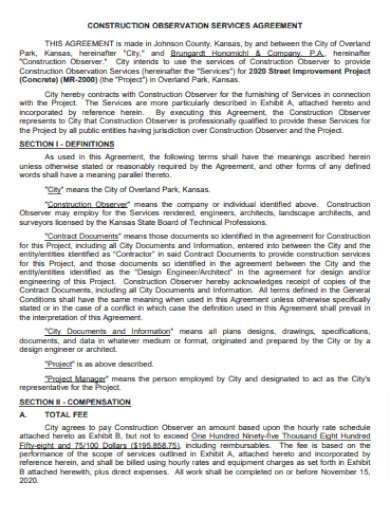
Construction Observation Project Agreement
download now -
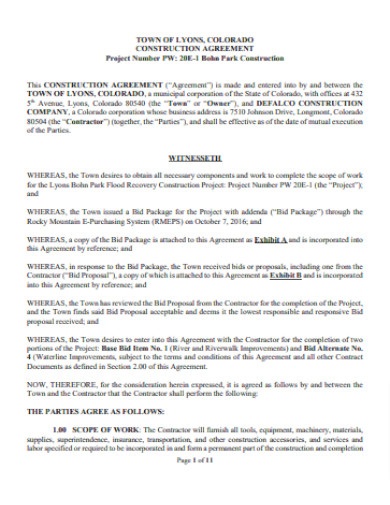
Construction Business Project Agreement
download now -
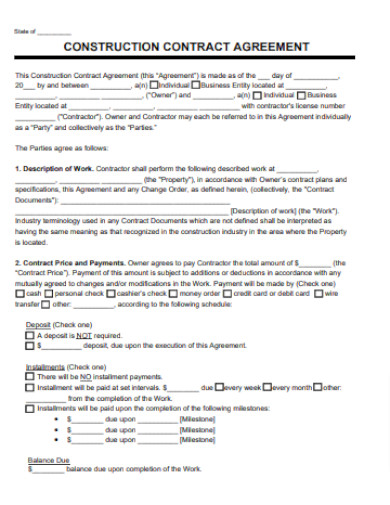
Printable Construction Project Agreement
download now -
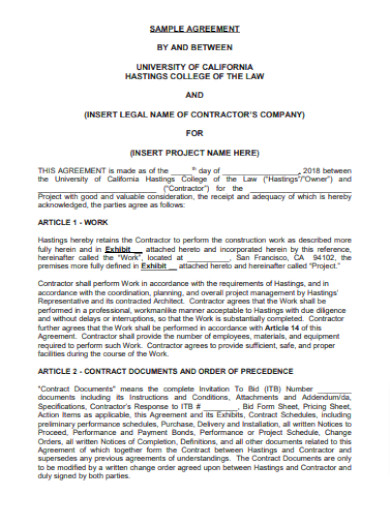
Construction Project Agreement Outline
download now -
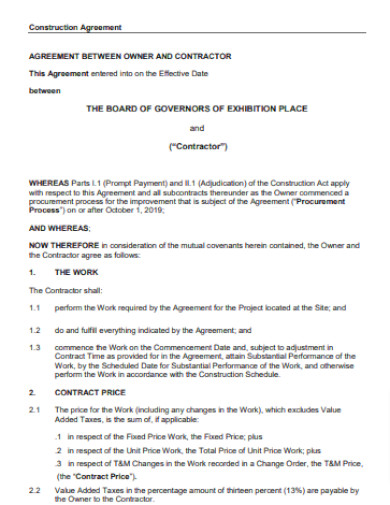
Standard Construction Project Agreement
download now -
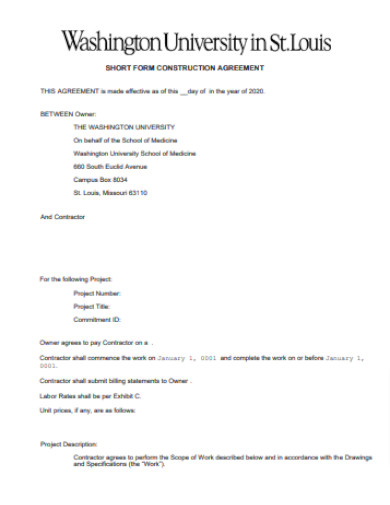
Construction Project Agreement Form
download now -
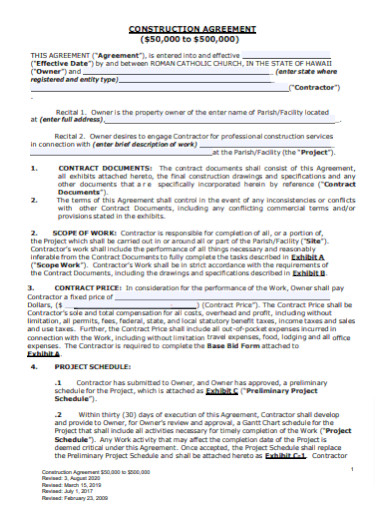
Editable Construction Project Agreement
download now -
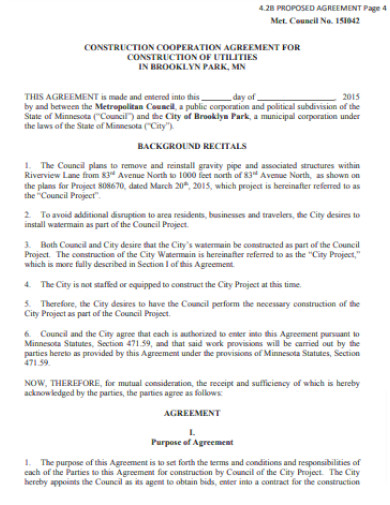
Construction Project Corporation Agreement
download now
FREE Construction Project Agreement s to Download
25+ SAMPLE Construction Project Agreement
Definition:
Understanding the Importance of a Construction Project Agreement:
Deciphering the Key Components:
The Making of an Effective Agreement:
Why Every Project Needs Construction Agreement?
Incorporating Changes and Amendments:
Which essential terms and conditions should be detailed in the agreement?
Why are payment schedules pivotal in a construction project agreement?
What considerations surround liability, indemnities, and insurance in the agreement?
How does the agreement outline the scope of the construction project?
When should parties finalize a construction project agreement?
Definition:
A Construction Project Agreement is a formal contract between involved parties in a construction project, delineating the scope of work, financial terms, timelines, and responsibilities. It serves as a binding document that outlines mutual expectations, safeguards interests, and provides a clear roadmap for the project’s execution, ensuring transparency and mitigating potential disputes.
Understanding the Importance of a Construction Project Agreement:
Every construction venture, regardless of its scale, hinges on the understanding and synchronization of all involved entities. A Construction Project Agreement bridges the gap between these entities, providing a cohesive framework that everyone can align with.
Deciphering the Key Components:
A well-structured document or system, be it an agreement, a report, or a tool, is often composed of several integral components. These components collectively ensure that the document serves its intended purpose effectively. When deciphering the key components, it’s essential to understand their individual significance, how they interrelate, and how they contribute to the larger objective.
Objectives and Purpose:
Every document has a primary objective. This section defines the main goal, ensuring that subsequent components align with this aim.
Main Content or Body:
This is the crux of the document. Depending on the nature of the document, this could be clauses in an agreement, data in a report, or functionalities in a tool.
Terms and Conditions:
In agreements or tools, this section outlines the rules, responsibilities, and boundaries. It ensures all parties are aware of their obligations.
Supporting Evidence or Documentation:
Any backup information, references, or annexures that substantiate the main content are included here. This bolsters credibility and provides a reference point.
Feedback or Communication Mechanisms:
Especially in interactive tools or agreements, there’s often a provision for feedback, queries, or communication to ensure smooth operations and clear channels for redressal.
Review and Updates:
Details about when and how the document will be reviewed, updated, or audited ensure it remains relevant and current.
Signatories and Approval:
For official documents like agreements, the involved parties endorse their acceptance and commitment by signing off.
The Making of an Effective Agreement:
Creating an effective agreement requires thoroughness, foresight, and a deep understanding of the mutual expectations of all parties involved. Whether it’s a business partnership, a construction project, or a service contract, the fundamental principles remain the same.
Clear Objectives:
Begin with a precise definition of the agreement’s purpose. This sets the foundation and guides the subsequent clauses. Knowing what you aim to achieve ensures the document remains focused and relevant.
Comprehensive Scope:
Define the scope of work or the deliverables expected. This should be detailed and encompass all tasks, milestones, and outcomes related to the agreement.
Responsibilities and Duties:
Clearly delineate the responsibilities of each party. This minimizes ambiguity, ensuring everyone knows their roles, preventing potential disputes.
Compensation and Payment Terms:
Detail the payment terms, including amounts, schedules, and methods. Also, specify any penalties for late payments or bonuses for early completion.
Duration and Termination:
Mention the start and end dates, including any provisions for renewals. Clearly define the termination clauses, specifying any notice periods and conditions under which the agreement can be ended.
Dispute Resolution:
Inevitably, disagreements may arise. Lay out mechanisms for resolving conflicts, whether it’s through mediation, arbitration, or legal action.
Confidentiality and Non-compete Clauses:
Protecting business secrets and ensuring parties don’t engage in competing activities can be crucial. Define what information is confidential and the ramifications if such data is disclosed.
Amendments and Modifications:
Agreements might need changes over time. Specify the process for making amendments, ensuring they are mutually agreed upon.
Signatures and Witnesses:
For the agreement to be legally binding, all involved parties must sign. Having witnesses can add another layer of authenticity.
Governing Law:
State the jurisdiction or the legal framework under which the agreement operates. This is vital in case of cross-border agreements or if the involved parties are from different regions.
Why Every Project Needs Construction Agreement?
Every construction project, regardless of its size or complexity, stands to benefit substantially from a well-drafted agreement. Here’s why:
1. Clear Expectations:
An agreement explicitly lays out what each party expects from the other. This clarity reduces misunderstandings and ensures all stakeholders are on the same page from the get-go.
2. Defined Scope:
It precisely outlines the project’s scope, ensuring there are no ambiguities regarding deliverables, milestones, and objectives. This helps in preventing scope creep and keeps the project on track.
3. Financial Clarity:
Financial misunderstandings can derail a project. An agreement specifies payment terms, amounts, schedules, and penalties or bonuses, eliminating financial ambiguities.
4. Risk Management:
In the unpredictable world of construction, numerous risks can arise, from safety issues to unforeseen site conditions. Agreements can allocate these risks, deciding in advance who bears the responsibility for specific challenges.
5. Dispute Resolution:
Disagreements can and will arise. Having a predefined mechanism for addressing disputes can expedite resolution, save costs, and prevent prolonged conflicts.
6. Legal Protection:
Should the worst happen and parties end up in court, a written agreement serves as a primary piece of evidence that can protect interests and clarify intentions.
7. Setting Standards:
An agreement can specify the standards of work, ensuring quality and adherence to regulations and best practices.
8. Termination Provisions:
Things don’t always go as planned. Having clear criteria and procedures for termination ensures that parties can part ways amicably if needed, without unnecessary complications.
9. Roles and Responsibilities:
By defining who is responsible for what, an agreement ensures that there are no overlaps or gaps in tasks, leading to smoother project execution.
10. Building Trust:
Having a formalized agreement demonstrates professionalism and commitment. It provides reassurance to all parties that their interests are protected, fostering a foundation of trust.
Incorporating Changes and Amendments:
Construction projects, by nature, are dynamic entities that can evolve and change over time. Whether due to unforeseen circumstances, revised client preferences, or any other factors, it’s common for changes to occur. For this reason, it’s paramount to have a well-thought-out mechanism to incorporate changes and amendments into an existing agreement. Here’s how it can be achieved:
Document Everything:
All changes, regardless of how minor they seem, should be documented meticulously. The original contract serves as a base, but each amendment should have its own separate documentation which references the original contract.
Clear Communication:
Before any change is formalized, it should be discussed and communicated clearly amongst all stakeholders. Any misunderstandings can lead to cost overruns, delays, or disputes.
Approval Process:
Implement a system where changes require formal approval, typically from senior management or other authorized individuals. This ensures that changes aren’t made hastily and have been considered at higher levels.
Specify Costs:
If the amendment leads to an increase or decrease in costs, this should be explicitly stated, agreed upon, and recorded. No work that incurs additional cost should commence without clear agreement on the new budget.
Review Timelines:
Amendments can impact project timelines. Review and, if necessary, revise the project schedule to reflect the changes.
Legal Review:
Significant changes, especially those that alter the core of the contract or have substantial financial implications, should undergo a legal review to ensure all parties’ interests remain protected.
Use Standardized Forms:
Using standardized forms or templates for change orders or amendments can streamline the process, ensuring that all necessary information is captured consistently.
Track Amendments:
Maintain a central repository where all changes and amendments are stored. This ensures that any stakeholder can review the evolution of the project agreement as needed.
Revisit Dispute Mechanisms:
With any change, consider the potential for future disputes and ensure the dispute resolution mechanisms in place are still appropriate for the amended agreement.
Signatures:
Just like the original agreement, any amendment or change order should be signed by all relevant parties. This formalizes the change and indicates mutual consent.
Which essential terms and conditions should be detailed in the agreement?
In a construction management agreement, essential terms and conditions should cover project scope, payment terms, timelines, responsibilities of both parties, quality standards, dispute resolution mechanisms, change order protocols, insurance and indemnification clauses, termination conditions, confidentiality, and any relevant compliance or regulatory considerations. These details ensure clarity, protect interests, and set clear expectations for the project’s execution.
Why are payment schedules pivotal in a construction project agreement?
Payment schedules in a construction project agreement are pivotal because they outline when and how contractors will be compensated, ensuring steady cash flow for work progression. They provide clarity on financial expectations, instill accountability, mitigate disputes, and offer milestones to gauge project progress. A clear payment schedule helps maintain trust and transparency between parties involved.
What considerations surround liability, indemnities, and insurance in the agreement?
In a construction agreement, considerations surrounding liability, indemnities, and insurance address risk allocation. Liability provisions determine responsibilities for potential damages or injuries. Indemnities protect against losses from third-party claims. Insurance clauses specify coverage types and amounts, ensuring financial protection against unforeseen events. Collectively, these terms safeguard stakeholders, manage potential disputes, and ensure project continuity amidst challenges.
How does the agreement outline the scope of the construction project?
The agreement defines the scope of the construction project through detailed descriptions of tasks, materials, methods, and objectives. It specifies inclusions and exclusions, setting clear expectations for deliverables. Clarity in the project scope ensures alignment between stakeholders, reduces ambiguities, and serves as a reference for performance evaluation, change requests, and potential dispute resolution.
When should parties finalize a construction project agreement?
Parties should finalize a construction project agreement before any work begins. This ensures mutual understanding and consensus on project specifications, timelines, payment terms, and other essential aspects. Having a signed agreement prior to commencement provides legal protection, sets clear expectations, reduces potential disputes, and fosters a collaborative environment for successful project execution.
In conclusion, the construction project agreement remains an indispensable tool in the construction industry, ensuring clarity, accountability, and risk mitigation. By cementing roles, responsibilities, and expectations, it serves as a roadmap to successful project completion. As construction dynamics change, leveraging such agreements is crucial for enhanced transparency and smoother collaborations, solidifying its role as a cornerstone for any construction endeavor.
